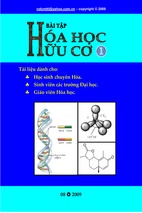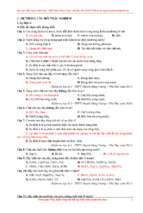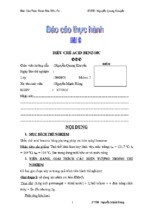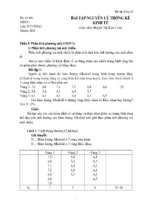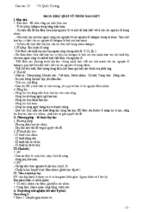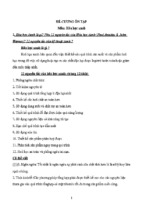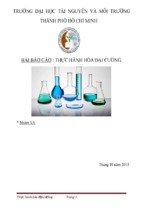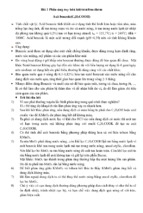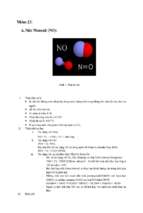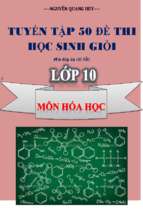ORGANIC CHEMISTRY
Dr Nam T. S. Phan
Faculty of Chemical Engineering
HCMC University of Technology
Office: room 211, B2 Building
Phone: 38647256 ext. 5681
Email:
[email protected]
1
Chapter 2:
ELECTRONIC &
STERIC EFFECTS
Effects
Electronic
Steric
Inductive
Hyperconjugation
Conjugation / Mesomeric
2
INDUCTIVE EFFECTS (I)
C-C σ bond in butane:
almost completely nonpolar
C-C σ bond in 1fluorobutane: polarized
δ-
δ''+
δ'''+
δ+
δ'+
C1 is more positive than C2 as a result of electronattracting ability of F
3
The more electronegative
the X, the stronger the –I
effect
4
The more electropositive the Z, the stronger
the +I effect
5
Through a period in a periodic table
-I
Through a
group in a
periodic
table
-I
6
CH3CH2CH2COOH
CH3CH2CH(Cl)COOH
CH3CH(Cl)CH2COOH
ClCH2CH2CH2COOH
Ka.105
1.5
139
8.9
3.0
Strong -I
weak -I
7
CONJUGATION / MESOMERIC
EFFECTS (C / M)
Electron delocalization in a conjugated system:
Alternating
single &
multiple
bonds
8
O is more electronegative than C
Electrons move through π-bond network towards
C=O
The conjugated system is polarized
C=O has negative conjugation / mesomeric effect
(-C / -M) on the conjugated system
9
C CH
-C
CH
CH
CHR
+C
C
-C
R
CH
CH
CH
CH
-C
O R
+C
O R
+C
10
OH
+C
O
H
-C
-C
+C
N
NH2
+C
-C
-C
+C
11
-C groups generally contain an electronegative atom (s)
or / and a π-bond (s):
CHO, C(O)R, COOH, COOR, NO2, CN, aromatics, alkenes
+C groups generally contain a lone pair of electrons
or a π-bond (s):
Cl, Br, OH, OR, SH, SR, NH2, NHR, NR2, aromatics, alkenes
Aromatics or alkenes can be both +C and-C
12
Through a period in a periodic table
+C
Through a
group in a
periodic
table
+C
13
INDUCTIVE vs CONJUGATION
EFFECTS
H
CH
CH
H
CH
CH
Mobility of hydrogen
atoms: almost the same
CH
CH
CH
CH
H CH
CH
O
C
H
CH
O
C
H
CH
O
C
H
-C
14
INDUCTIVE vs CONJUGATION
EFFECTS
• C effects are generally stronger than I
effects
• C effects can be effective over much
longer distances than I effects –
provided that conjugation is present
• I effects are determined by distance, C
effects are determined by relative
positions
15
HYPERCONJUGATION EFFECTS (H)
Electron density from Cα-H flows into the vacant p orbital
(in carbocation / C=C / C≡C) because orbitals can partially
overlap
Hyperconjugation effects (H)
16
•H effect of -CH3 is stronger than H effect of -CH2•H effect is generally stronger than I effect
H
H C CH
δ+
H
CH
δ−
CH3
CH
CH2
CH2
CH3
CH2
HCl
CH3
Cl
Electron-donating ability of -CH3 is stronger
than that of -CH2CH3
17
STERIC EFFECTS
• A steric effect is an effect on relative rates caused
by space-filling properties of those parts of a
molecule attached at / near the reacting site
• Steric hindrance: the spatial arrangement of the
atoms / groups at / near the reacting site hinders /
retards a reaction
• Generally, very large & bulky groups can hinder
the formation of the required transition state
18
Steric hindrance
19
Steric
hindrance
20

